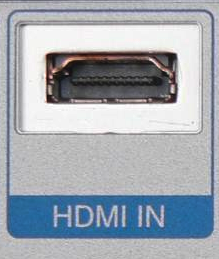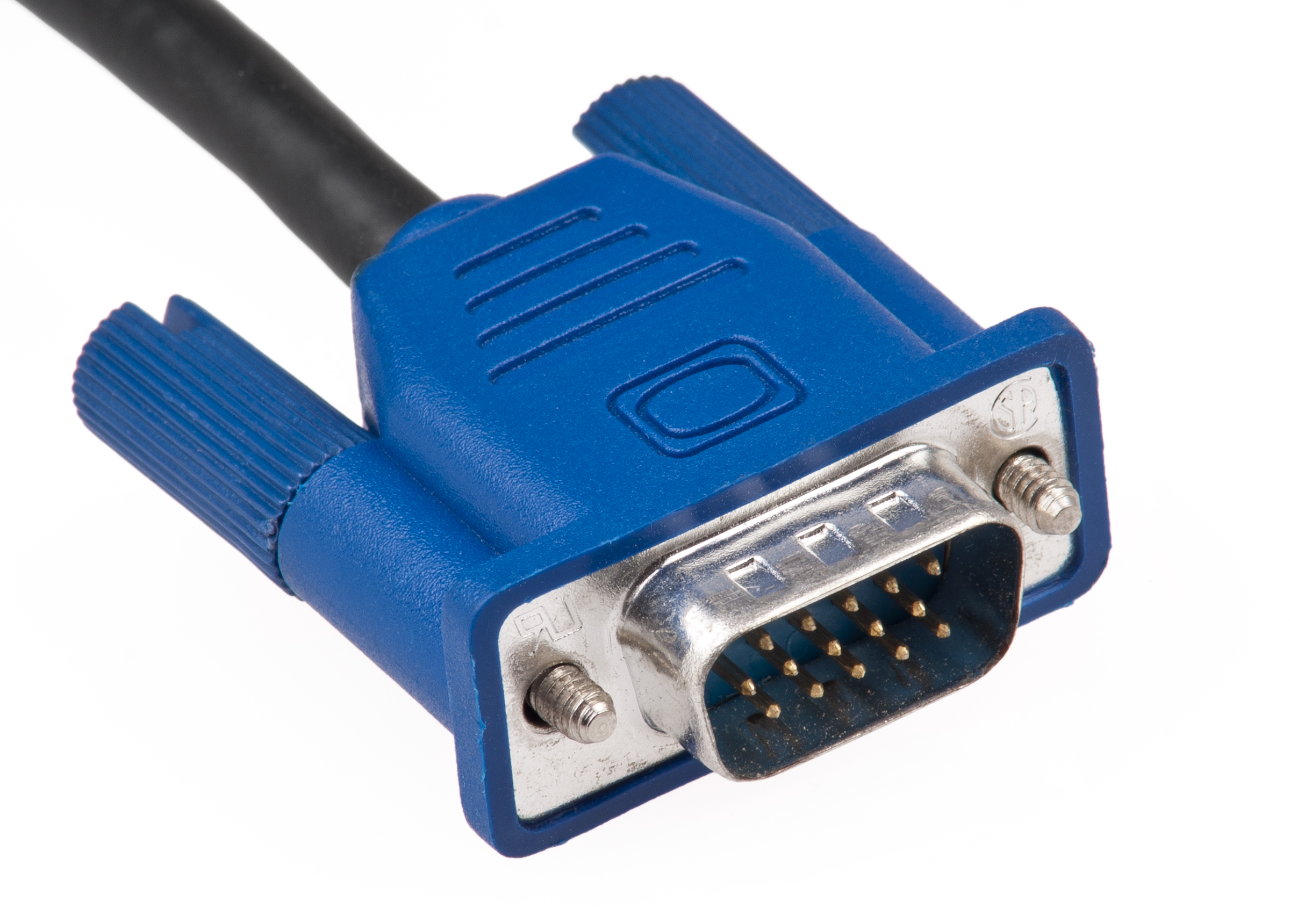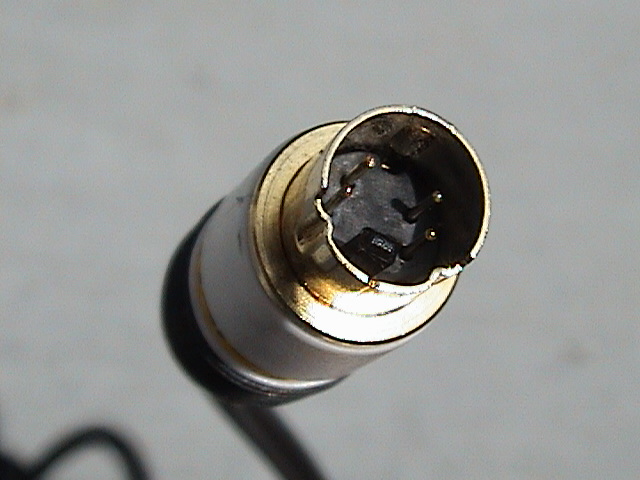|
AV Input
AV input is a common label on a connector to receive (AV) audio/visual signals from electronic equipment that generates AV signals (AV output). These terminals are commonly found on such equipment as a television, DVD recorder or VHS recorder, and typically take input from a DVD player, a TV tuner, VHS recorder or camcorder. Types of plugs used for video input *Composite video **RCA connector **BNC connector **UHF connector ** 1/8 inch minijack phone connector *S-video ** DIN plug (also used for Apple Desktop Bus) *Component video **RCA connector **RGBHV *Digital video Digital video is an electronic representation of moving visual images (video) in the form of encoded digital data. This is in contrast to analog video, which represents moving visual images in the form of analog signals. Digital video comprises ... ** HDMI (High Definition Multimedia Interface) ** DVI (Digital Video Interface) ** IEEE 1394 (FireWire) ** SPDIF (Sony Philips Digital Interface) Audiovisual co ... [...More Info...] [...Related Items...] OR: [Wikipedia] [Google] [Baidu] |
Audio And Video Connector
Audio connectors and video connectors are electrical or optical connectors for carrying audio or video signals. Audio interfaces or video interfaces define physical parameters and interpretation of signals. For digital audio and digital video, this can be thought of as defining the physical layer, data link layer, and most or all of the application layer. For analog audio and analog video these functions are all represented in a single signal specification like NTSC or the direct speaker-driving signal of analog audio. Physical characteristics of the electrical or optical equipment include the types and numbers of wires required, voltages, frequencies, optical intensity, and the physical design of the connectors. Any data link layer details define how application data is encapsulated (for example for synchronization or error-correction). Application layer details define the actual audio or video format being transmitted, often incorporating codecs not specific to the interf ... [...More Info...] [...Related Items...] OR: [Wikipedia] [Google] [Baidu] |
DIN Plug
The DIN connector is an electrical connector that was standardized by the ' (DIN), the German Institute for Standards, in the early 1970s. The male DIN connectors (plugs) feature a 13.2 mm diameter metal shield with a notch that limits the orientation in which plug and socket can mate. The range of DIN connectors, different only in the configuration of the pins, have been standardized as DIN 41524 / IEC/DIN EN 60130-9 (3-pin at 90° and 5-pin at 45°); DIN 45322 (5-pin and 6-pin at 60°); DIN 45329 / IEC/DIN EN 60130–9 (7-pin at 45°); and DIN 45326 / IEC/DIN EN 60130-9 (8-pin at 45°). In consumer electronics, the term "DIN connector" identifies types of cylindrical connectors that the German Institute for Standards (DIN) had initially standardised for analog audio signals. Some DIN connectors have been used in analog video applications, for power connections, and for digital interfaces, such as the MIDI (DIN 41524), the IBM PC keyboard and the IBM AT keyboard connect ... [...More Info...] [...Related Items...] OR: [Wikipedia] [Google] [Baidu] |
FireWire
IEEE 1394 is an interface standard for a serial bus for high-speed communications and isochronous real-time data transfer. It was developed in the late 1980s and early 1990s by Apple in cooperation with a number of companies, primarily Sony and Panasonic. Apple called the interface FireWire. It is also known by the brand names i.LINK (Sony), and Lynx (Texas Instruments). The copper cable used in its most common implementation can be up to long. Power and data is carried over this cable, allowing devices with moderate power requirements to operate without a separate power supply. FireWire is also available in Cat 5 and optical fiber versions. The 1394 interface is comparable to USB. USB was developed subsequently and gained much greater market share. USB requires a host controller whereas IEEE 1394 is cooperatively managed by the connected devices. History and development FireWire is Apple's name for the IEEE 1394 High Speed Serial Bus. Its development was initiated by ... [...More Info...] [...Related Items...] OR: [Wikipedia] [Google] [Baidu] |
Digital Visual Interface
Digital Visual Interface (DVI) is a video display interface developed by the Digital Display Working Group (DDWG). The digital interface is used to connect a video source, such as a video display controller, to a display device, such as a computer monitor. It was developed with the intention of creating an industry standard for the transfer of digital video content. This interface is designed to transmit uncompressed digital video and can be configured to support multiple modes such as DVI-A (analog only), DVI-D (digital only) or DVI-I (digital and analog). Featuring support for analog connections, the DVI specification is compatible with the VGA interface. This compatibility, along with other advantages, led to its widespread acceptance over competing digital display standards Plug and Display (P&D) and Digital Flat Panel (DFP). Although DVI is predominantly associated with computers, it is sometimes used in other consumer electronics such as television sets and DVD play ... [...More Info...] [...Related Items...] OR: [Wikipedia] [Google] [Baidu] |
High-Definition Multimedia Interface
High-Definition Multimedia Interface (HDMI) is a proprietary audio/video interface for transmitting uncompressed video data and compressed or uncompressed digital audio data from an HDMI-compliant source device, such as a display controller, to a compatible computer monitor, video projector, digital television, or digital audio device. HDMI is a digital replacement for analog video standards. HDMI implements the EIA/CEA-861 standards, which define video formats and waveforms, transport of compressed and uncompressed LPCM audio, auxiliary data, and implementations of the VESA EDID. CEA-861 signals carried by HDMI are electrically compatible with the CEA-861 signals used by the Digital Visual Interface (DVI). No signal conversion is necessary, nor is there a loss of video quality when a DVI-to-HDMI adapter is used. The Consumer Electronics Control (CEC) capability allows HDMI devices to control each other when necessary and allows the user to operate multiple devices with on ... [...More Info...] [...Related Items...] OR: [Wikipedia] [Google] [Baidu] |
Digital Video
Digital video is an electronic representation of moving visual images (video) in the form of encoded digital data. This is in contrast to analog video, which represents moving visual images in the form of analog signals. Digital video comprises a series of digital images displayed in rapid succession. Digital video is audio and video mixed together to make a production. the data gathered used to create a video, rather than a series of photos put together. Digital video have many advantages such as easy copying, multicasting, easy sharing and storage. Video recorded on tape is used on a computer on media player. Digital video is made of images displayed rapidly frequencies of 15, 24,30, and 60 frames per second. Digital video was first introduced commercially in 1986 with the Sony D1 format, which recorded an uncompressed standard-definition component video signal in digital form. In addition to uncompressed formats, popular compressed digital video formats today include H.264 ... [...More Info...] [...Related Items...] OR: [Wikipedia] [Google] [Baidu] |
RGBHV
Component video is an analog video signal that has been split into two or more component channels. In popular use, it refers to a type of component analog video (CAV) information that is transmitted or stored as three separate signals. Component video can be contrasted with ''composite video'' in which all the video information is combined into a single signal that is used in analog television. Like composite, component-video cables do not carry audio and are often paired with audio cables. When used without any other qualifications, the term ''component video'' usually refers to analog component video with sync on luma (Y) found on analog high-definition televisions and associated equipment from the 1990s through the 2000s when they were largely replaced with HDMI and other all-digital standards. Component video cables and their RCA jack connectors on equipment are normally color-coded red, green and blue, although the signal is not in RGB. YPbPr component video can be loss ... [...More Info...] [...Related Items...] OR: [Wikipedia] [Google] [Baidu] |
Component Video
Component video is an analog video signal that has been split into two or more component channels. In popular use, it refers to a type of component analog video (CAV) information that is transmitted or stored as three separate signals. Component video can be contrasted with '' composite video'' in which all the video information is combined into a single signal that is used in analog television. Like composite, component-video cables do not carry audio and are often paired with audio cables. When used without any other qualifications, the term ''component video'' usually refers to analog component video with sync on luma (Y) found on analog high-definition televisions and associated equipment from the 1990s through the 2000s when they were largely replaced with HDMI and other all-digital standards. Component video cables and their RCA jack connectors on equipment are normally color-coded red, green and blue, although the signal is not in RGB. YPbPr component video can be los ... [...More Info...] [...Related Items...] OR: [Wikipedia] [Google] [Baidu] |
Apple Desktop Bus
Apple Desktop Bus (ADB) is a proprietary bit-serial peripheral bus connecting low-speed devices to computers. It was introduced on the Apple IIGS in 1986 as a way to support low-cost devices like keyboards and mice, allowing them to be connected together in a daisy chain without the need for hubs or other devices. Apple Device Bus was quickly introduced on later Macintosh models, on later models of NeXT computers, and saw some other third-party use as well. Like the similar PS/2 connector used in many PC-compatibles at the time, Apple Desktop Bus was rapidly replaced by USB as that system became popular in the late 1990s; the last external Apple Desktop Bus port on an Apple product was in 1999, though it remained as an internal-only bus on some Mac models into the 2000s. History AppleBus Early during the creation of the Macintosh computer, the engineering team had selected the fairly sophisticated Zilog 8530 to supply serial communications. This was initially done to allow ... [...More Info...] [...Related Items...] OR: [Wikipedia] [Google] [Baidu] |
S-video
S-Video (also known as separate video, Y/C, and erroneously Super-Video ) is an analog video signal format that carries standard-definition video, typically at 525 lines or 625 lines. It encodes video luma and chrominance on two separate channels, achieving higher image quality than composite video which encodes all video information on one channel. It also eliminates several types of visual defects such as dot crawl which commonly occur with composite video. Although it improved over composite video, S-Video has lower color resolution than component video, which is encoded over three channels. The Atari 800 was the first to introduce separate Chroma/Luma output in late 1979. However, S-Video did not get widely adopted until JVC's introduction of the S-VHS (Super-VHS) format in 1987, which is why it is sometimes incorrectly referred to as "Super-Video." Before the shift towards digital video the S-video format was widely used by consumers, but it was rarely used in professiona ... [...More Info...] [...Related Items...] OR: [Wikipedia] [Google] [Baidu] |
Television
Television, sometimes shortened to TV, is a telecommunication medium for transmitting moving images and sound. The term can refer to a television set, or the medium of television transmission. Television is a mass medium for advertising, entertainment, news, and sports. Television became available in crude experimental forms in the late 1920s, but only after several years of further development was the new technology marketed to consumers. After World War II, an improved form of black-and-white television broadcasting became popular in the United Kingdom and the United States, and television sets became commonplace in homes, businesses, and institutions. During the 1950s, television was the primary medium for influencing public opinion.Diggs-Brown, Barbara (2011''Strategic Public Relations: Audience Focused Practice''p. 48 In the mid-1960s, color broadcasting was introduced in the U.S. and most other developed countries. The availability of various types of archival st ... [...More Info...] [...Related Items...] OR: [Wikipedia] [Google] [Baidu] |
Phone Connector (audio)
A phone connector, also known as phone jack, audio jack, headphone jack or jack plug, is a family of electrical connectors typically used for analog signal, analog audio signals. A plug, the Gender of connectors and fasteners, male connector, is inserted into the jack, the female connector. The phone connector was invented for use in telephone switchboards in the 19th century and is still widely used. The phone connector is cylindrical in shape, with a grooved tip to retain it. In its original audio configuration, it typically has two, three, four or, occasionally, five contacts. Three-contact versions are known as ''TRS connectors'', where ''T'' stands for Tip and ring, "tip", ''R'' stands for Tip and ring, "ring" and ''S'' stands for "sleeve". Ring contacts are typically the same diameter as the sleeve, the long shank. Similarly, two-, four- and five-contact versions are called ''TS'', ''TRRS'' and ''TRRRS connectors'' respectively. The outside diameter of the "sleeve" c ... [...More Info...] [...Related Items...] OR: [Wikipedia] [Google] [Baidu] |








